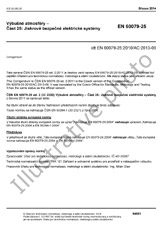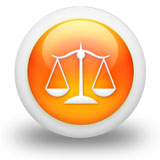We need your consent to use the individual data so that you can see information about your interests, among other things. Click "OK" to give your consent.

CISPR 16-1-4-ed.4.2+Amd.1+Amd.2-CSV
Specification for radio disturbance and immunity measuring apparatus and methods - Part 1-4: Radio disturbance and immunity measuring apparatus - Antennas and test sites for radiated disturbance measurements
Translate name
STANDARD published on 13.4.2023
| Availability | Sold out |
| Price | ONREQUEST excl. VAT |
| ON REQUEST |
The information about the standard:
Designation standards: CISPR 16-1-4-ed.4.2+Amd.1+Amd.2-CSV
Publication date standards: 13.4.2023
SKU: NS-1138834
The number of pages: 659
Approximate weight : 2008 g (4.43 lbs)
Country: International technical standard
Annotation of standard text CISPR 16-1-4-ed.4.2+Amd.1+Amd.2-CSV :
CISPR 16-1-4:2019+AMD1:2020+AMD2:2023 CSV specifies the characteristics and performance of equipment for the measurement of radiated disturbances in the frequency range 9 kHz to 18 GHz. Specifications for antennas and test sites are included. NOTE In accordance with IEC Guide 107, CISPR 16-1-4 is a basic EMC publication for use by product committees of the IEC. As stated in Guide 107, product committees are responsible for determining the applicability of the EMC standard. CISPR and its sub-committees are prepared to cooperate with product committees in the evaluation of the value of particular EMC tests for specific products. The requirements of this publication apply at all frequencies and for all levels of radiated disturbances within the CISPR indicating range of the measuring equipment. Methods of measurement are covered in Part 2-3, further information on radio disturbance is given in Part 3, and uncertainties, statistics and limit modelling are covered in Part 4 of CISPR 16. This fourth edition cancels and replaces the third edition published in 2010, Amendment 1:2012 and Amendment 2:2017. This edition constitutes a technical revision. This edition includes the following significant technical changes with respect to the previous edition: • provisions are added to address test site validation in the frequency range from 30 MHz to 1000 MHz using the reference site method, to take into account the receive antenna radiation pattern in the frequency range from 1 GHz to 18 GHz, and further details on test site validation using the NSA method with broadband antennas in the frequency range from 30 MHz to 1 000 MHz. Keywords: radiated disturbances, frequency range 9 kHz to 18 GHz CISPR 16-1-4:2019+AMD1:2020+AMD2:2023 CSV specifie les caracteristiques et les performances des appareils de mesure de perturbations rayonnees dans la gamme de frequences de 9 kHz a 18 GHz. Elle comprend les specifications pour les antennes et les emplacements dessai. NOTE Conformement au Guide 107 de lIEC, la CISPR 16-1-4 est une publication fondamentale en CEM destinee a etre utilisee par les comites de produits de lIEC. Comme indique dans le Guide 107, les comites de produits ont la responsabilite de determiner sil convient dappliquer ou non cette norme dessai en CEM. Le CISPR et ses sous-comites sont prets a cooperer avec les comites de produits a levaluation de la valeur des essais dimmunite particuliers pour leurs produits. Les exigences de cette publication sappliquent a toutes les frequences et a tous niveaux de perturbation rayonnee, dans les limites de la plage de lecture des appareils de mesure du CISPR. Les methodes de mesure sont traitees dans la Partie 2-3, des informations supplementaires sur les perturbations radioelectriques sont donnees dans la Partie 3 et les incertitudes, les statistiques et la modelisation des limites sont couvertes par la Partie 4 de la CISPR 16. Cette quatrieme edition annule et remplace la troisieme edition parue en 2010, lAmendement 1:2012 et lAmendement 2:2017. Cette edition constitue une revision technique. Cette edition inclut les modifications techniques majeures suivantes par rapport a ledition precedente: • des dispositions ont ete ajoutees pour traiter la validation des emplacements dessai dans la gamme de frequences de 30 MHz a 1 000 MHz en utilisant la methode de site de reference, pour tenir compte du diagramme de rayonnement de lantenne de reception dans la gamme de frequences de 1 GHz a 18 GHz, ainsi quune description plus detaillee de la validation des emplacements dessai par la methode du NSA avec des antennes a large bande dans la plage de frequences de 30 MHz a 1 000 MHz. Mots-cles : perturbations rayonnees, 9 kHz a 18 GHz
We recommend:
Updating of laws
Do you want to be sure about the validity of used regulations?
We offer you a solution so that you could use valid and updated legislative regulations.
Would you like to get more information? Look at this page.



 Cookies
Cookies
